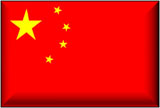West
East Corporation
中国的合作伙伴 : 投资中国,在中国做生意,在中国咨询,使中小型企业国际化
The new World Bank forecasts on China's economic growth
June, 2012World Bank released new forecasts on China's economic growth, which should return a growth rate of GDP of 8.2% in 2012 and to 8.6% in 2013. The percentages, while remaining significantly positive, marking a slowdown compared to previous data, mostly a result of reduced investment and export demand.
The latest World Bank report about the growth prospects of China's economy said that growth in gross domestic product in China will be 8.2 percent in 2012 and 8.6 percent in 2013. The quarterly update, while documenting a decreasing trend compared to the results of the recent past, confirms, however, that the growth forecasts for the future are good. The slowdown in 2012 is due to the contraction of consumption and, more markedly, of investment and external demand, the inevitable consequences of the global economic crisis. The document, which regularly assesses the Chinese economy, identifies as the key to resolve the short-term problems in the policy measures to support growth: in particular, the paper is advocating a policy on tax incentives for consumption. Interventions in this direction should be made according to a logic-sighted, in pursuit of long-term objectives .
“The current episode of cyclical weakness shows the limits of China’s export-, credit- and investment-led growth model (…). Strong progress on the structural reform agenda will help China achieve the objective of improving the quality of its development.”
It could be decisive in this respect the role played by the banking system, that has always been the main source of financing of the economy of the Dragon: in this sense, the reserve and capital requirements imposed on banks could be revised to facilitate the availability of credit. Besides, it should be also fundamental the development of alternative financing sources, with a greater orientation to the market. The long-term prospects will depend, it is said, from the management of some "structural challenges" including, in particular, measures of intervention in support of per-capita income and aimed at improving productivity. To increase the opportunities for competition and "redefine the source of competitive advantage" of China, once represented mainly by cheap labor, finally the country will have to focus on innovation .
关于我们
由于我们拥有专业人士和广泛的中国网,也叫作 " 关系 ",我们咨询公司能为打算投资中国的客户提供全方位的支持。而这(尤其是中小型企业)会使公司在中国做生意时的危险和失望减到最少。





